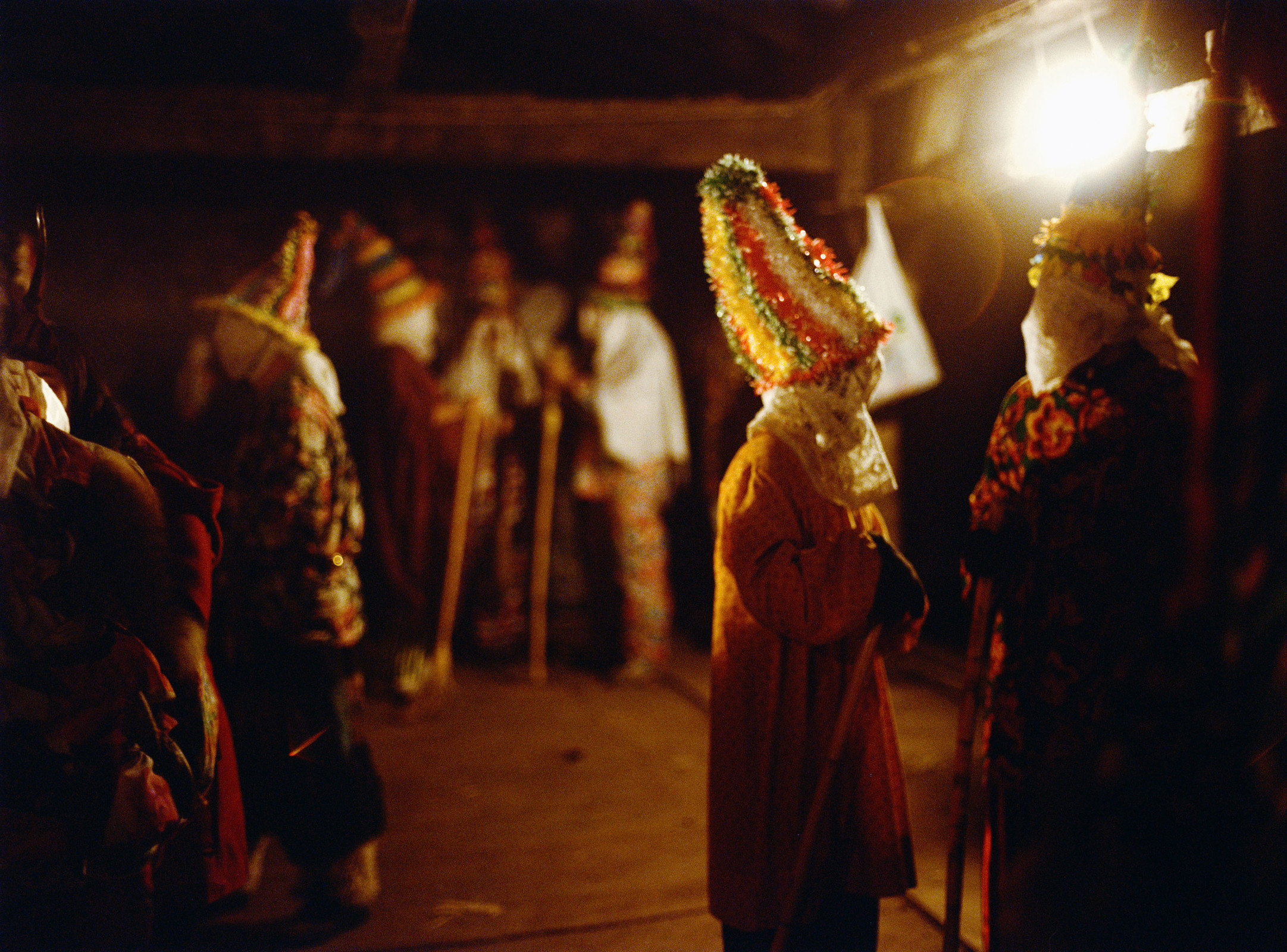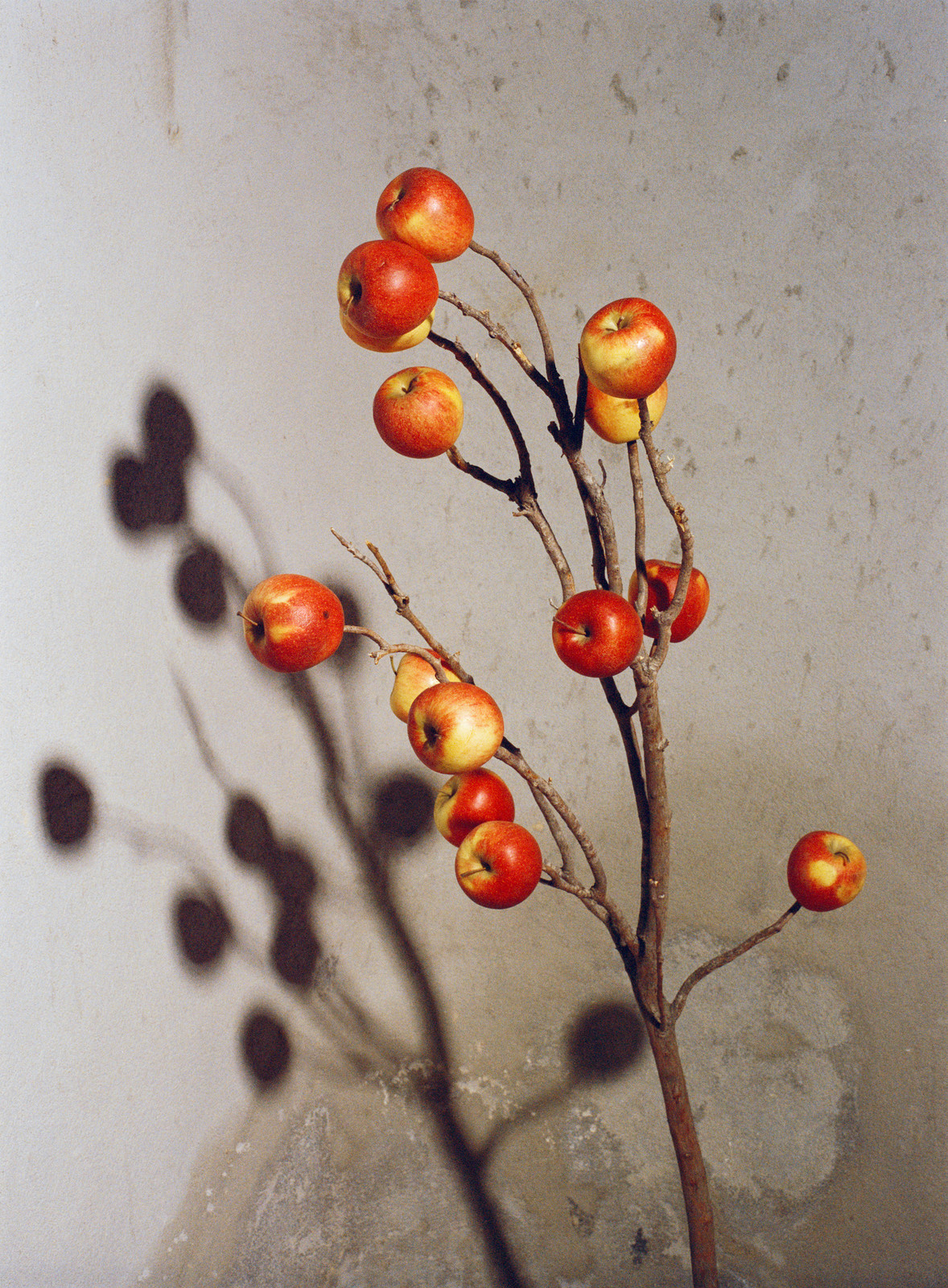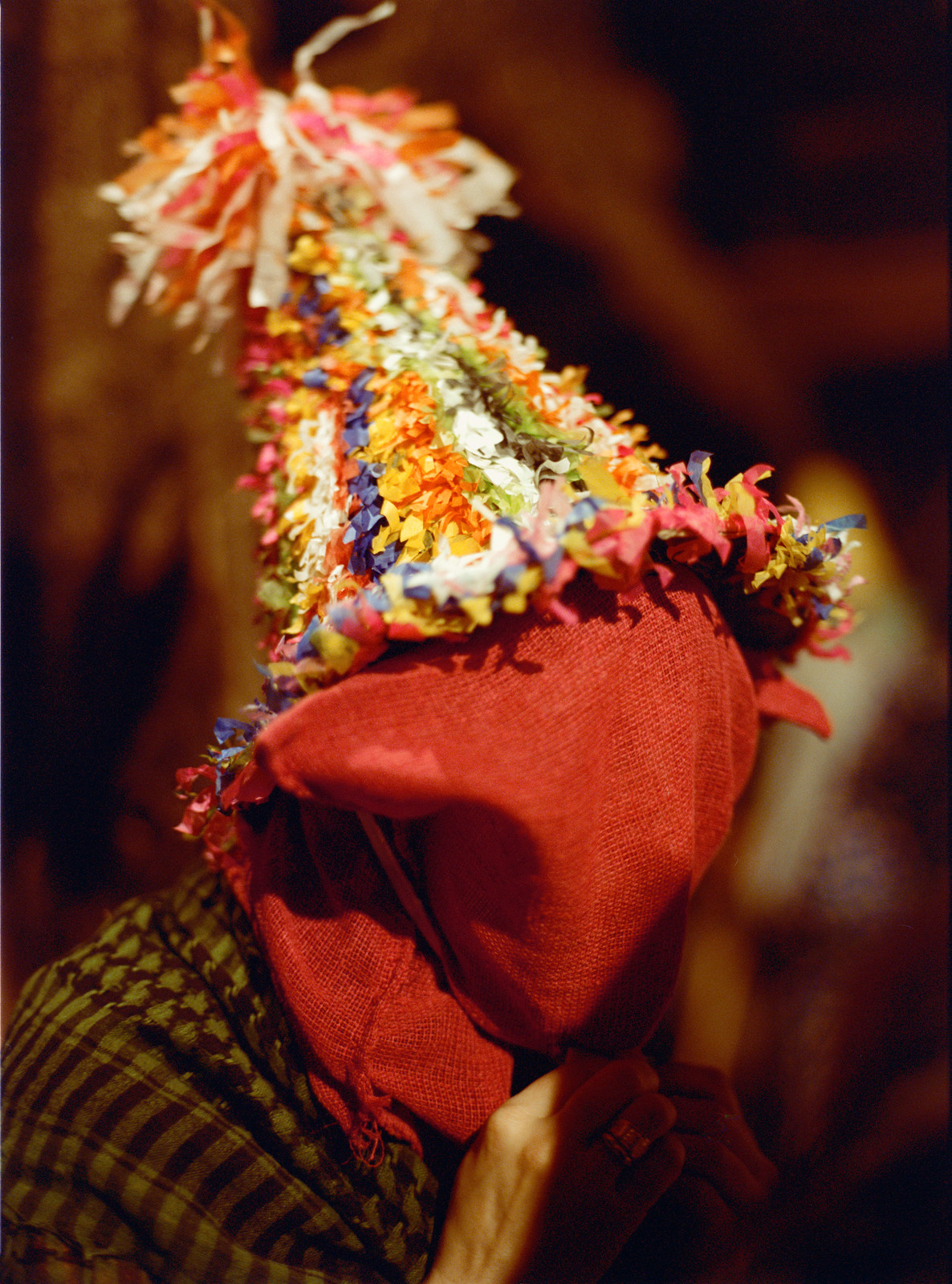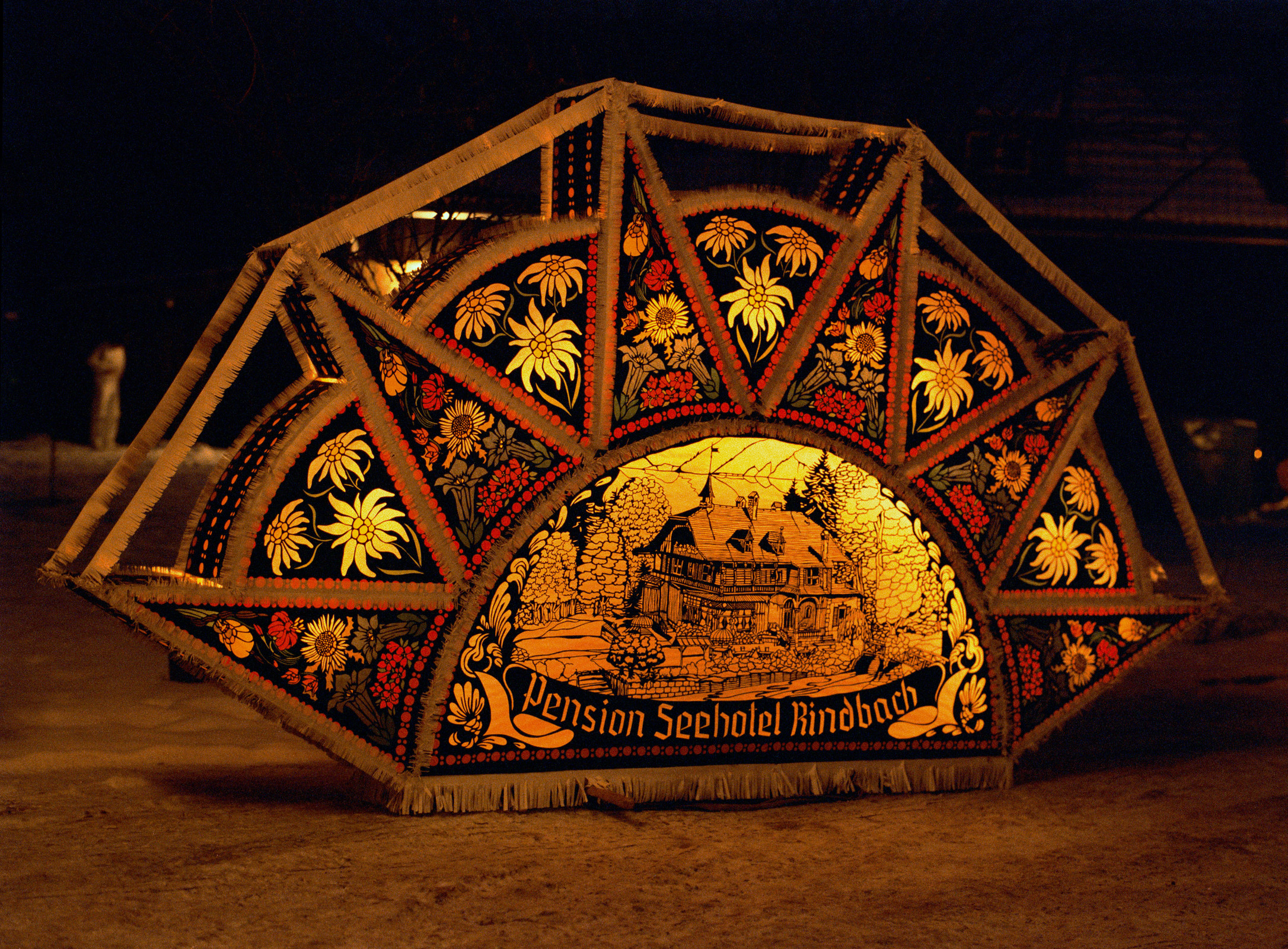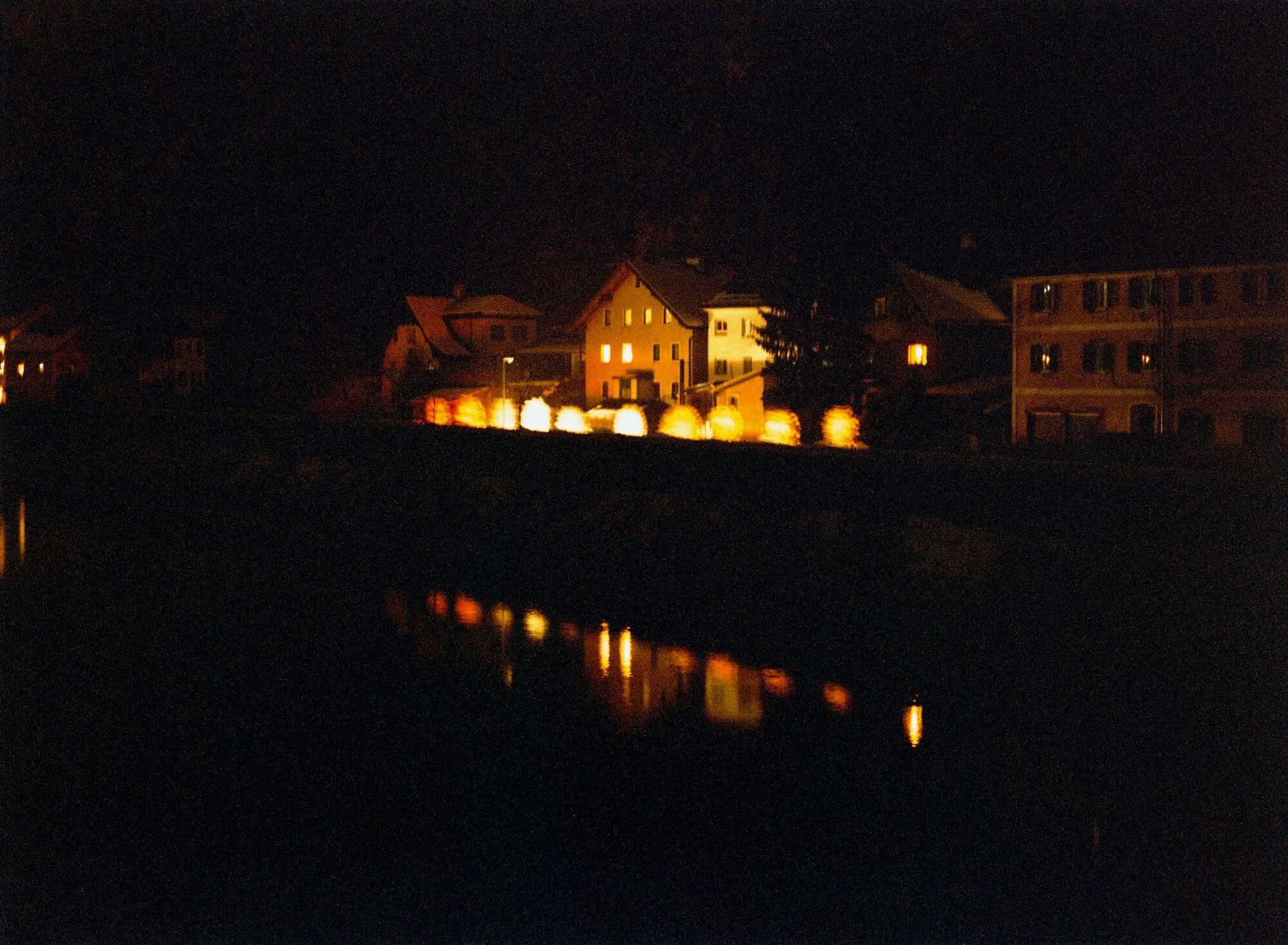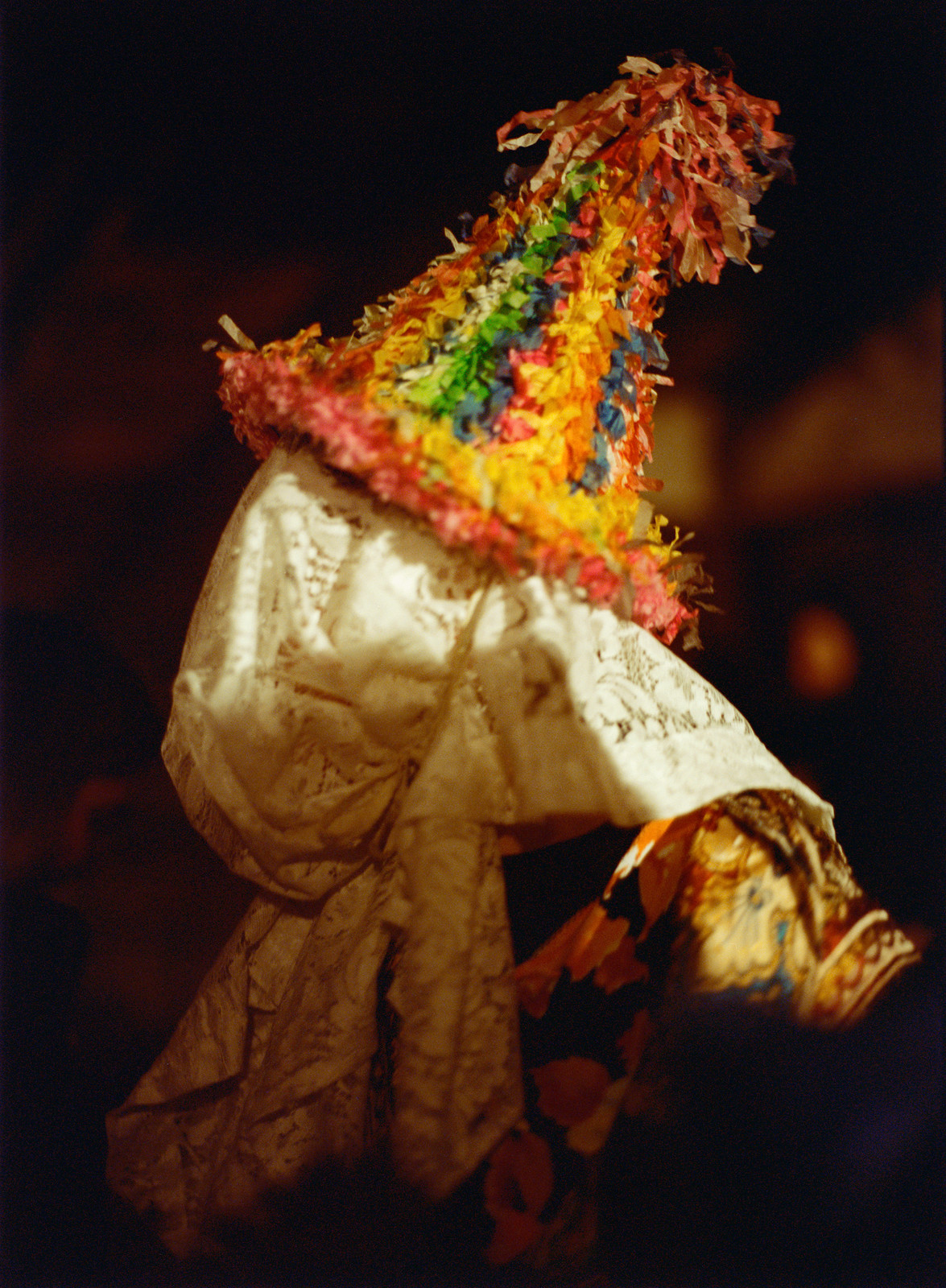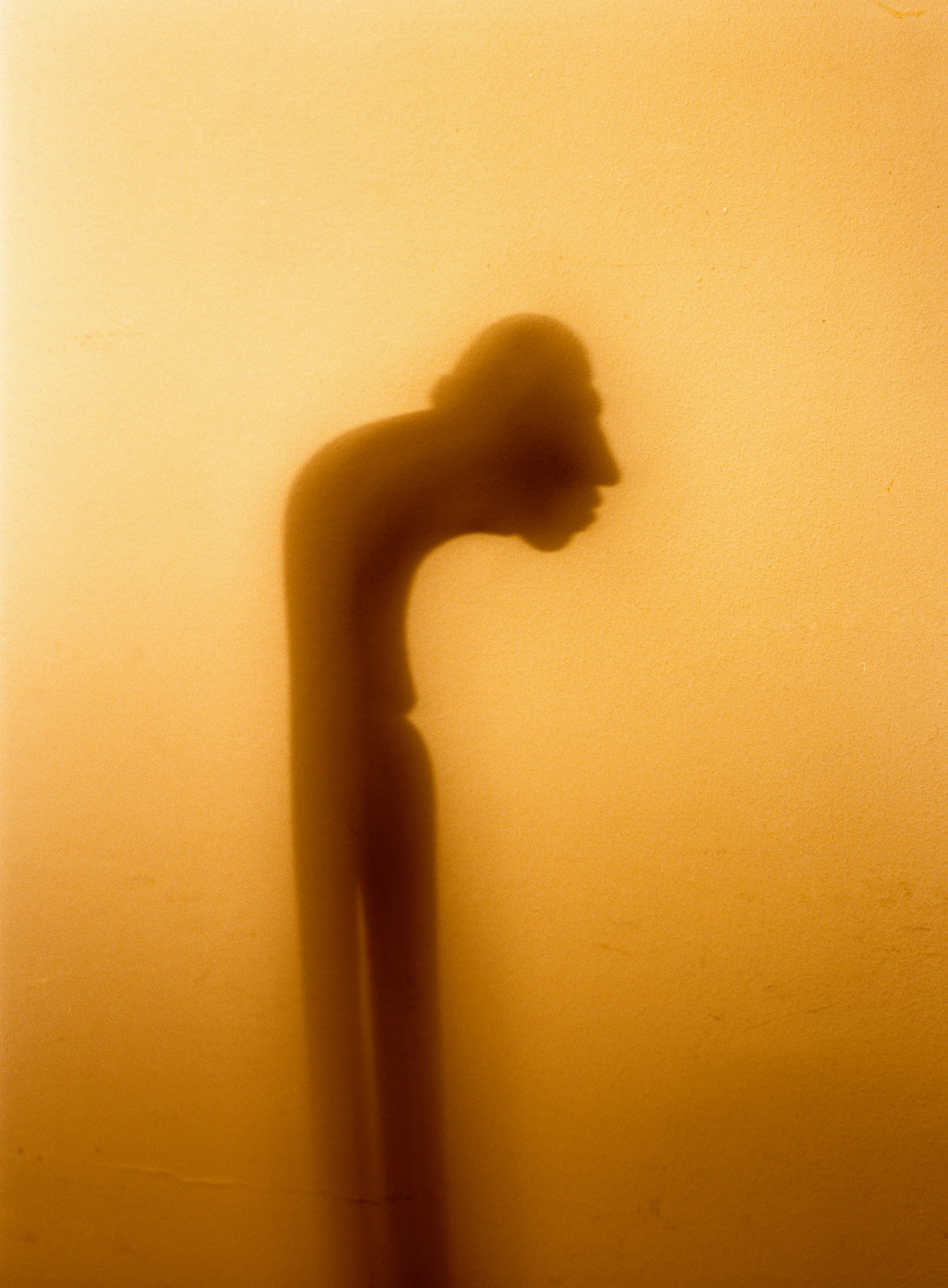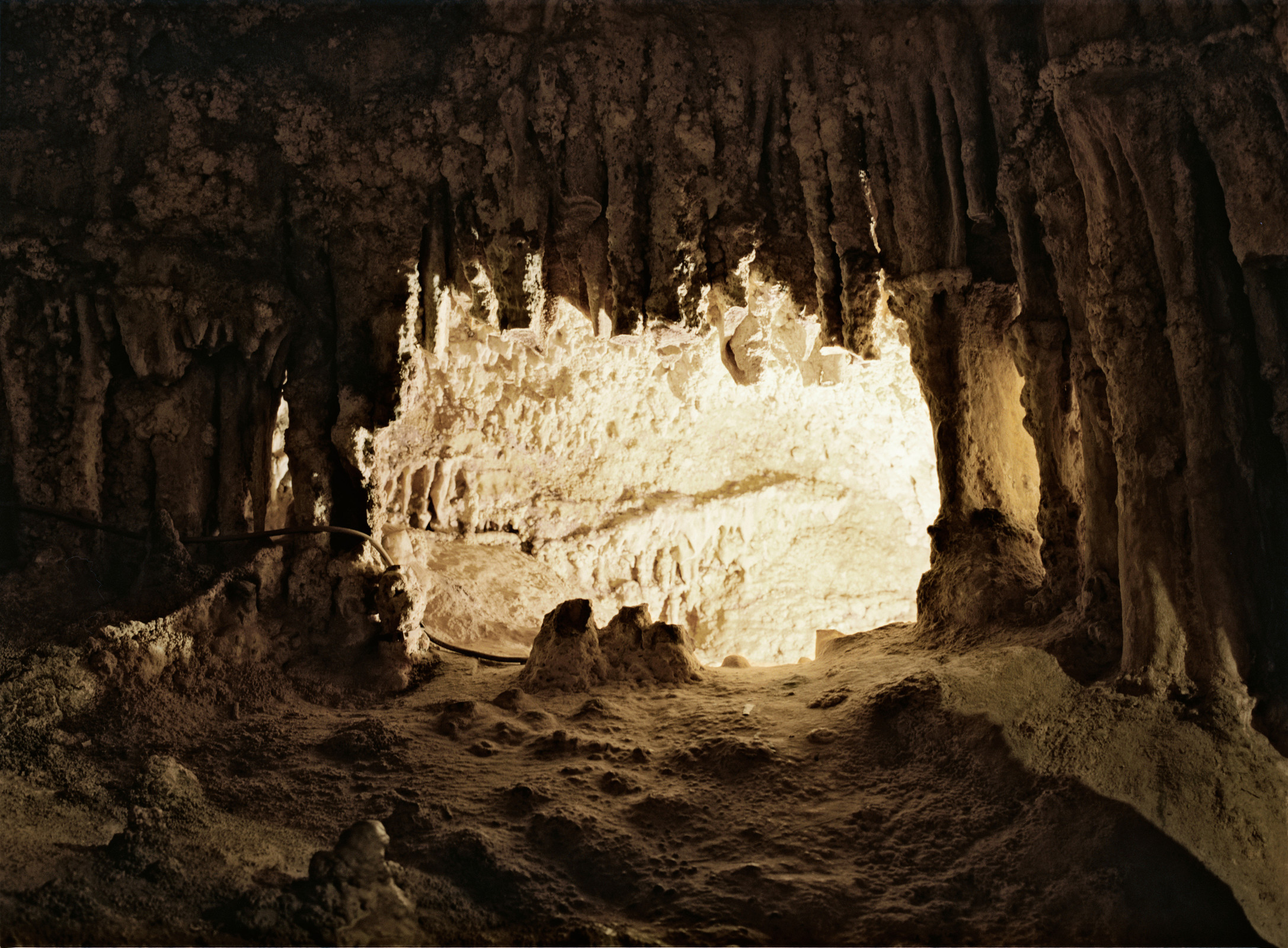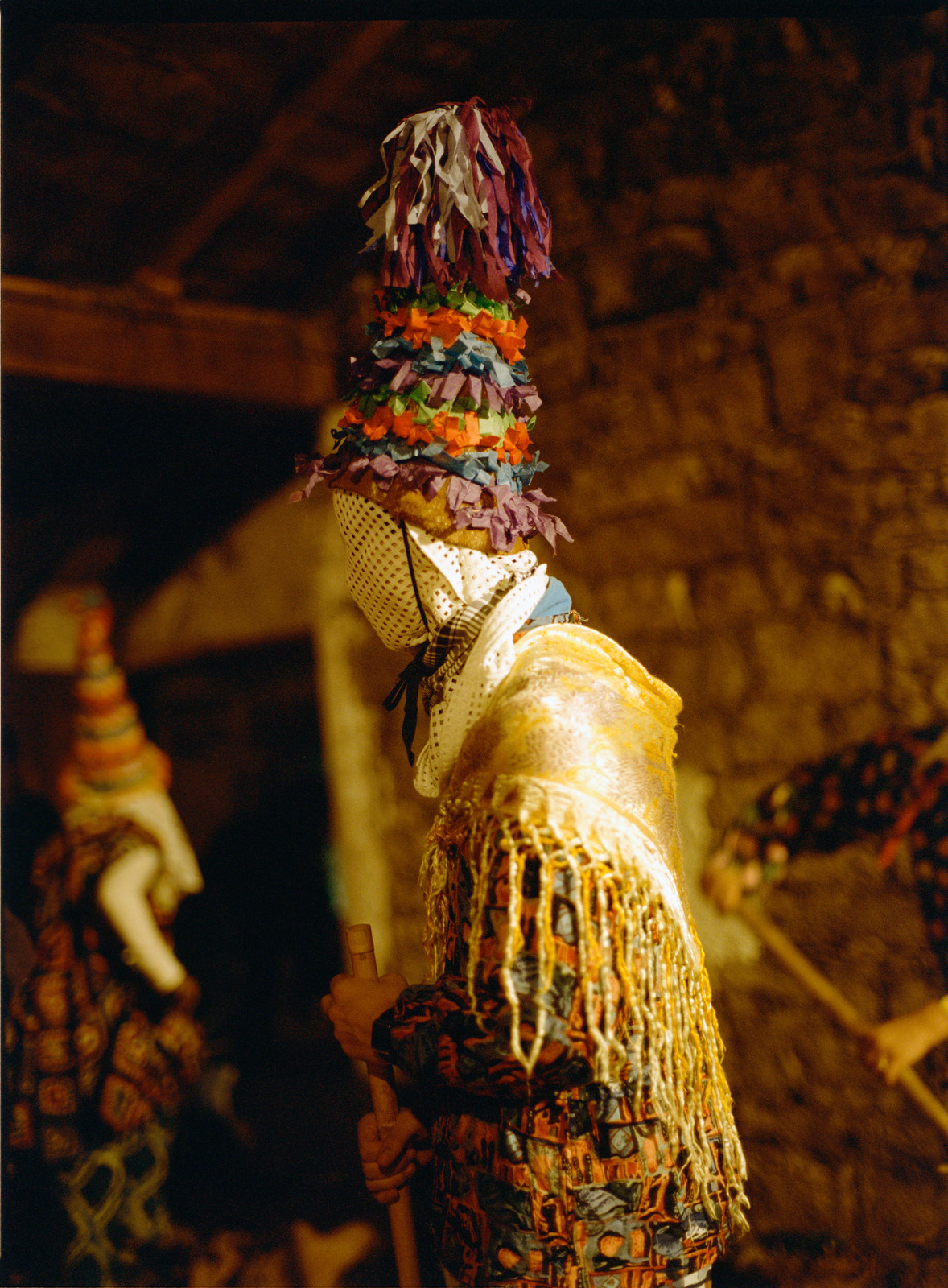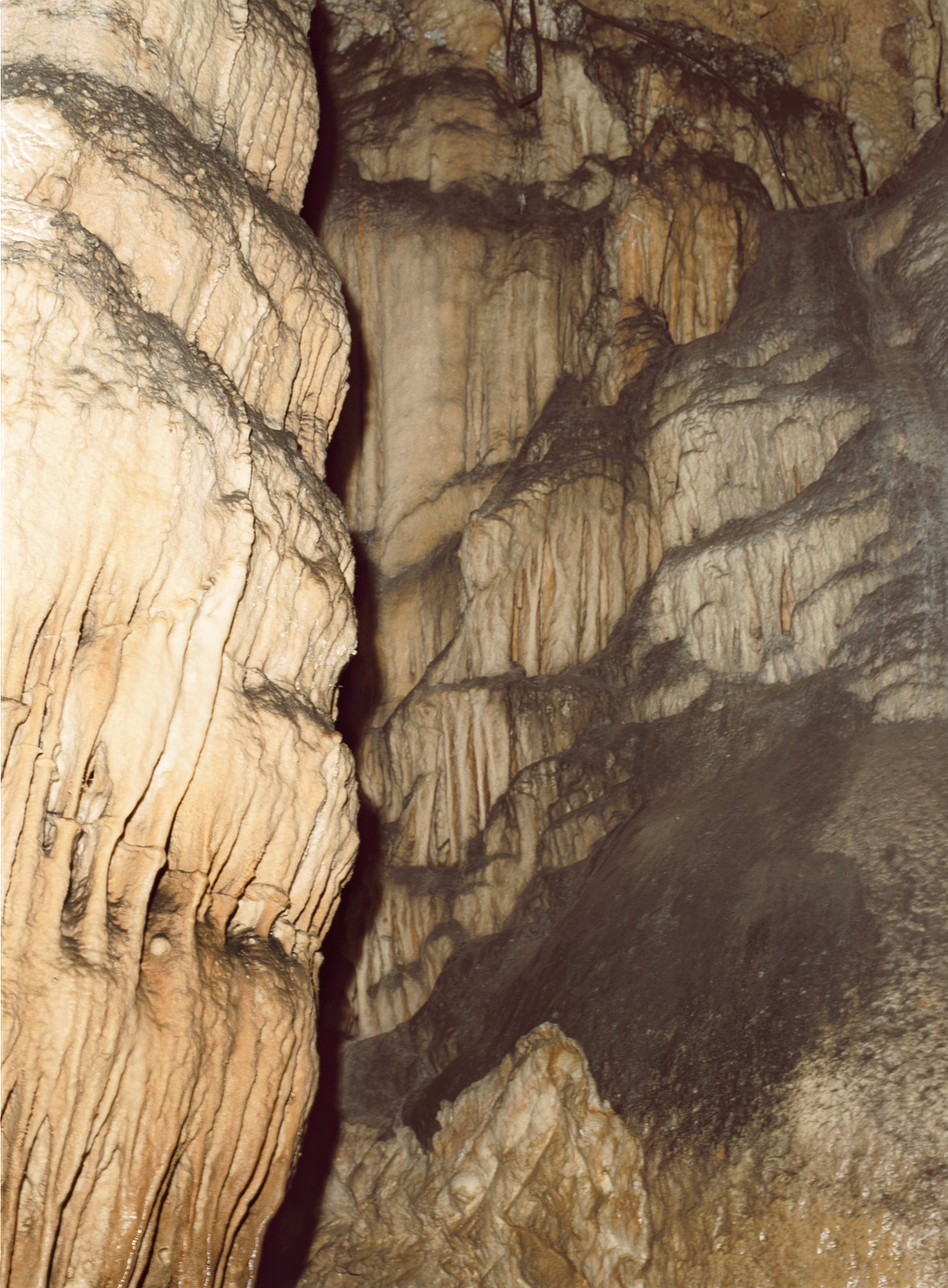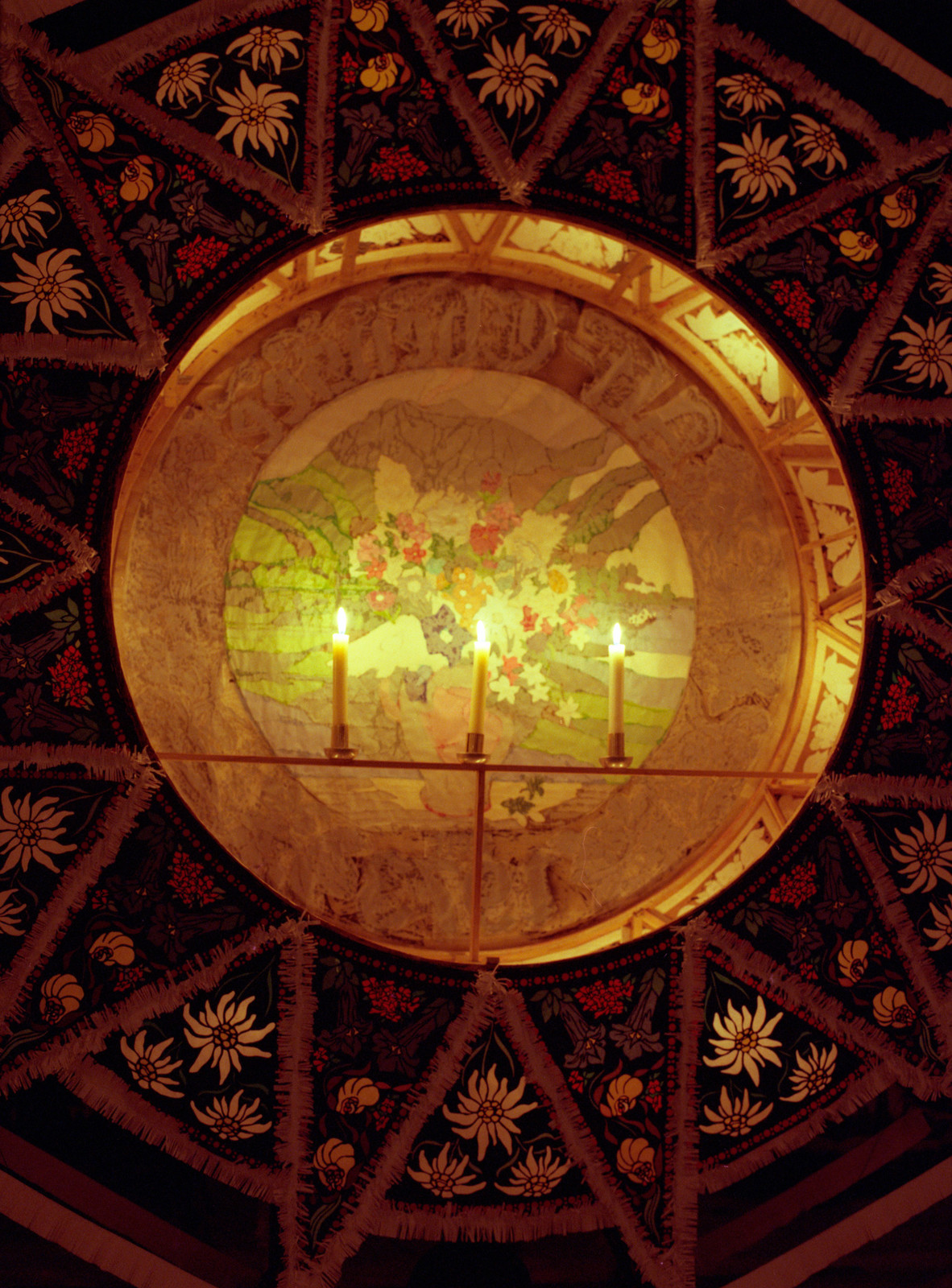Personal project
Interview by Alexis Vaillant
Where do the creatures you photograph come from?
They are hybrid beings that come out of hiding once a year, scare people away, and haunt the minds of famers, children and photographers like me. The costumes and masks are worn only by men judged strong enough to put on these heavy accessories. They are gathered in several groups, the “handsome” sophisticated ones on one side, and the savage, brutal and “ugly” ones on the other. The latter are the ones that attract me the most. There is a sense of bestiality, of abstraction, that comes from them and
allows me to play visually with the forms produced by the bodies costumed thus.
What triggers this?
A tradition. Each year, at winter solstice, they come out from caves, sheds, parking lots and many other unexpected places.
Like a ritual?
Absolutely. A ritual connected to the winter festival cycle. These processions take place in which parts of the world, precisely? Throughout Europe, in remote regions where traditions are still strong, namely in the mountains and in the countryside. The photographs gathered in this book were taken in the following places: the Appenzell region of Switzerland, Austria, Basque Country, the Dolomite Mountains of Northern
Italy and Bulgaria.
What are these men doing?
They parade from one farm to another in costumes and masks. They wander around natural and urban landscapes. Every role is well defined: some of them sing, some of them shake in a frenzy while others signify the closing of the festivities. In Switzerland for example, all of them wear more or less imposing bells which announce their deafening arrival, their singing and the sound of the bells are an essential part of the tradition. They stop in front of houses, gather in a circle, run after the scared children, chase after farmers and order them to serve food and drinks! In the old days, peasants would fear the shift from one season to another and, above all, the arrival of winter. They would witness winter coming every year, fearing that spring would never come back, that nature would not be reborn and that the harvests would not be good. These peasants were wearing costumes to become demonic characters themselves. They did processions to scare evil spirits possibly crouching in the farms and were thus fighting against the death of nature, hibernation, lessening of daylight, so many signs attributed to evil spirits. The costumes were supposed to help them both rival and communicate with these spirits — and to make sure that spring and good harvests would return.
How many time do you spend on location?
As long as the ritual requires, that is to say generally a day or two. As a photographer, it might be tempting to stage the shooting to get as many “exploitable” images as possible. I prefer adjusting to the rhythm of those I observe, I do not stage these festivals out of their contexts. The important thing is to find my place and explore the situation. Each year, I deliberately choose a spot according to the costumes and masks that attract me. I am always surprised.
What are your location strategies?
The mystery emanating from these festivals must be respected. Moreover, we all have our own search engines, right? I lead precisely targeted, non-exhaustive researches. My purpose is not to lead a “European tour” of winter traditions nor to keep a calendar of these feasts. And my selection is filtered by my own obsessions, my own instinct. In the first place, I’m interested in the brutality of the costumes directly connected to nature. Either because they mimic it or because they melt into it, or transform it while embellishing it or making it monstrous.
What role do you play when you’re there?
I let myself get carried away. I observe the situation as discreetly as possible, and I try to avoid any authoritarian approach to the subject.
To sum up?
To sum up, one needs a place, a date, and characters. Once these parameters are reunited, the frame is set and I can slide into it and let myself go as much as I can. This loss of ‘self’ is crucial for me, it allows me to exercise my gaze. I once came across this excerpt from a text of Jean Starobinski evoking the poet Philippe Jaccottet : “he does not obliterate himself from the subject, he does not absent himself from his word, he does not profess absolute anonymity — instead he persists, now freed from his own history, freed from the care of his own self, he can confront the world, the elements in a righter way”.
… Your approach of photography is structured…
… Structured around two axes that may seem contradictory: instinct and skill. A balance needs to be found between theses two ideas. An improvised precision, perhaps. To quote Jean Starobinski one last time, “the apparent paradox that associates ignorance and truth makes ignorance the receptacle of the most precious truth to the condition that nonknowledge remains perpetually disquiet and open to all the accidents of the world’s light”. I recognize myself in this approach.
Does the gaze you cast on these practices have an anthropological meaning?
Not really. I met specialists and anthropologists to gather information but then again my aim is to keep as much spontaneity as I can in facing this subject. My approach isn’t anthropological or ethnological, per se. I draw from reality by taste: for the surprise and mystery that comes from it. This posture allows me not to spoil a subject but to allow it to keep all its essence and magic.
Your images bear no titles…
They do not have precise captions, but they are organized by series under a general title. My connection to the world is questioning, non-descriptive. I’m not interested in cataloguing.
Your technical approach is quite raw, isn’t it?
It is indeed. I do not edit nor modify images. I use a mid-format film camera. This constraint limits the number of images and shooting speed, and that offers the advantage of keeping me in the moment, in an alert state, so that I am able to capture what is essential. I don’t know if this is related, but I’ve been having this recurring dream in which I’m witnessing an incredible scene that I want to shoot. But, when I’m about to take the picture, the camera explodes, the lens falls, the film is missing, and so on. Only the memory remains. I often experience a similar fear… When I’m working, this fear acts as a kind of additional motivation for me to stay in the moment.
Questions related to identity, body, fetishism (details of costumes for example) are present in your work. Why?
The body plays a key role in my work. It is the archetypal common element. The body merges into the masses as much as it withdraws from it. Universal and singular are refered to at the same time, the body combines difference with resemblance, the extraordinary with the banal, and that makes it an endless source of inspiration. Identity is also a (photographic) subject I relish. The fact that I have a twin sister probably has something to do with it… Pictures of isolated individuals or groups of people say something about community, about tribes. They raise the question of the individual’s personal quest among the group and of the ways used by the individual to distinguish itself from apparent uniformity / similarity. The fetishist dimension of costumes unnerves this relational maze and such intertwining fascinates me.
Do you think these customs become documentary material through photography?
Maybe. But in spite of myself. I do not try to define the outlines of a practice or of my practice. If my work has a documentary approach, I would like it to be in Sergueï Paradjanov’s way, when he summons legends, visions and rites that he filters, personalizes and thus, displaces. Paradjanov is a magician of reality, he managed to mix imaginary, folklore and social realism. His approach is particularly inspiring to me.
At the same time, some costumes are hilarious, which confers a “daydream“ quality to your work.
I’m thrilled that the underneath comic aspect can be perceived, beyond the fear that some costumes may inspire. This ambivalence interests me a lot. The events I photograph speak of one’s need to challenge fears and to conquer them. This is the profound sense of masquerades, carnivals and other costumed parties, these ritualized moments when one can abstract from the norms and social constraints of daily life to join a larger community, staging a wild and unrestrained, both frightening and outrageously funny imaginary world. I like to shoot and sometimes emphasize both aspects of the thing: an old communist building of a Bulgarian village in front of which hairy figures are plotting, a supermarket parking lot on which a group of hybrid characters is wiggling, and so on. This escapist will of humanity leads to a theatrical reality that I like
to mingle in and photograph. I’m not interested in staged photography, because as inventive you might be, the work will always be of a jarring poorness compared to this kind of spectacle.
Your images often have a rock / raw quality that makes them urban, to the opposite of exoticism…
This is right: out with exoticism. A pitfall which I absolutely don’t want to fall into. These celebrations take place in our own world, and that is what makes them especially interesting to me. We can also find gateways between this universe and the ones of rock artists indeed: I remember my encounter with Attila Csihar, an Austrian black metal singer with an hallucinating style, and whose energy was similar to some characters of masked folklore. His songs and vocals bear enormous similarities to the Zaeuerli of Swiss Chlause. For the rest, it is true that the approach of artists connected to Art Brut inspired my own approach. The autodidact creations allowed me to accept the spontaneity I was looking for and above all to come to terms with it. The fact that spontaneity is a synonym for naivety and wonder in a practice that must also deal with the question of distance profoundly structured my own practice.
Is it a series? If so, what was its chronology?
I began working on that subject in 2006. The notion of series in the field of photography often appears to me as quite rigid, born from a will to define and circumscribe a project in an artificial way. However, the organization of my images in a series is inevitable since it allows me to introduce a narration. But I carefully watch that the series do not become frozen in time, and to the contrary, that it remains open and articulated around a core that is constantly renewing itself. I like to juxtapose images taken several years apart, to make genres cohabit — still life, portrait, and landscape — to give to the series a sense of great freedom and variety. Thus the series creates itself in spite of me. I would like my pictures to be an instant combination of several genres, still life, landscape and portrait at the same time.
